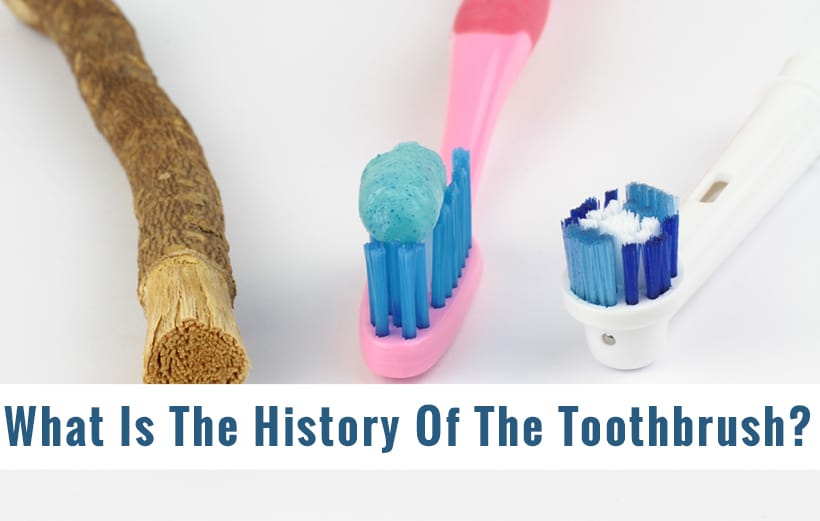
There is no doubt that many of us take the toothbrush for granted. This simple invention has been around longer than any of us, improving people’s dental health now for centuries. We hear it all the time that we should brush our teeth twice a day, yet many still see brushing as an inconvenience. It is interesting to look back at the history of the toothbrush over the past centuries and see how it has evolved!
- The Simple Invention
- Toothbrushes For All
- The Evolving Toothbrush
- The Modern Toothbrush
- So What Toothbrush Should You Get?
The Simple Invention Of The Toothbrush
The first toothbrushes invented were very simple, but that doesn’t discount their efforts to get the job done. Around 3500 B.C., the Egyptians and Babylonians were the first to use this simple invention. Back then they used materials such as tree twigs, bird feathers, and animal bones. They would chew on one end of the object until it was soft like a brush and this mechanical action helped to remove plaque from their teeth and helped to stimulate their gum tissue.
Toothbrushes For All
The first mass-produced toothbrush was produced in Europe in 1780. In 1770, William Addis had been jailed for causing a riot. While he was in prison, he realized that using a rag with soot and salt on his teeth could be improved. He saved a small bone from one of his meals and then drilled small holes into it. He added tufts of bristles into the holes in the bone and then sealed the holes with glue to help hold the tufts secure. He started a business manufacturing toothbrushes which made him very wealthy. He passed away in 1808 and by 1840, Britain, France, Germany, and Japan were mass-producing toothbrushes.
The Evolving Toothbrush
While we can see the toothbrush’s development over many decades, its modification yet continues to our present day. The first patent for a toothbrush in the United States came in 1857. Mass production came to the United States in 1885 and at that time the toothbrush was composed of a bone handle with Siberian boar hair bristles. Animal bristles proved to not be an ideal material since they did not dry efficiently. Thus, they retained lots of bacteria. By 1938, synthetic fiber bristles replaced natural animal bristles on the toothbrush.
Most toothbrushes today are composed of nylon bristles and their handles are molded from thermoplastic materials. Toothbrush companies have since angled toothbrush heads to better be able to reach back teeth. Looking back over the toothbrush’s history, we can also see that bristles are more tightly packed together to better remove plaque. Typically, the outer bristles are longer and softer than the inner bristles to help gently remove plaque around gum tissue areas and keep them healthy.
The Modern Toothbrush
From the modern buzz of the electric toothbrush to a baby’s first chew brush, the options sure seem endless these days! It can feel a little overwhelming walking the oral health aisle of our local grocery stores with several dozen options to choose between. Our toothbrushes today look quite different than the first toothbrush invented. Today, different toothbrushes offer different features, but the important thing to recognize is that the mechanics behind them all is similar. Using a gentle motion, the bristles of any toothbrush help to remove plaque that can cause problems like tooth decay as well as gum disease. Studies have shown us that this bacteria doesn’t just stay localized to the oral cavity. Problems with heart disease can sometimes be linked back to the same bacteria that is found in people’s mouth. Therefore, routine brushing is important to our oral health but also to our overall health.
So What Toothbrush Should You Get?
It’s important that you have a toothbrush, but more importantly, it’s essential that you use it twice a day! Choosing the different features out there as far as a toothbrush’s head shape, color, or brand really comes down to personal preference. Sticking with a soft-bristled toothbrush is recommended as soft bristles can effectively remove plaque without being too harsh on the gum tissue. We also recommend switching out your toothbrush for a new one every 3 months as the bristles get worn out and aren’t as effective at removing plaque when this happens.
We would love to hear from you! What has been your favorite toothbrush to use? Please share in the comments below.



Leave a Reply